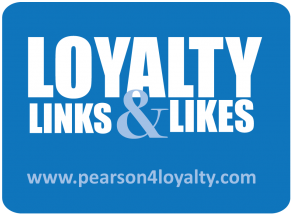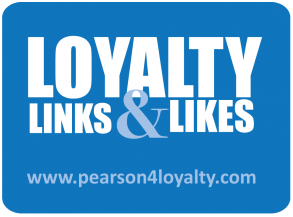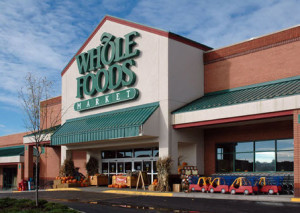Bryan Pearson's Blog, page 35
June 16, 2014
Big Wins with Little Data, in Four Steps
 When it comes to data insights, marketers tend to underestimate the power of little. They should not be fooled. Like small faults, little findings can result in seismic shifts.
When it comes to data insights, marketers tend to underestimate the power of little. They should not be fooled. Like small faults, little findings can result in seismic shifts.
This was pointedly argued in an article about the virtues of little data, written by David Meer for Strategy + Business. One sentence leapt from the page as I read his piece:
“A paradigm shift – away from management based on gut feelings and toward data-driven decision making – is already under way, and accelerating.”
This is an important line. Many organizations have gotten got caught up in thinking that Big Data – with high velocity, volume or variability – is a requirement when in truth they are already sitting on a wealth of potential in the data they have. If they shift their focus to finding new ways to use what they have, such as applying a customer perspective to the information, they can generate fresh insights and management options.
Meer offered three steps that companies should follow to extract meaning from their little data. I would add one more step, and suggest that big companies, as well as small, would benefit from them all. Here they are, with an added loyalty spin:
• Be more fact-based: Organizations should think about what information is available to gain reliable insights into the business. Even better, data analysis, when it relies on insights collected through a loyalty program, can yield even broader opportunities. Extending customer insights by using the data from a merchant-branded loyalty program that is tied to a credit card, for example, not only gathers information from activities with that brand, but also activities with its competitors. In cases where such information is not available, organizations should apply the facts at hand in their decision making. This will lead to the next step.
• Learn by doing: “Since little data applications are not commercially available via third parties, companies have to use trial and error,” Meer wrote. The loyalty publishing company COLLOQUY likes to refer to the importance of “quick wins” that come with data trialing, and how the returns in intelligence and business can be leveraged in the following years. Importantly, such small successes will inspire incremental management support.
• Be creative: Do not underestimate the feedback that comes from employees. In-store observations, online surveys and call-center conversations all can reveal much about customers, Meer wrote. Organizations can even offer incentives to those who provide feedback, further enhancing their brand value while also obtaining valuable information from natural interactions with their customers. Affordable technology, such as cloud backup services, can ensure customer information is securely stored and available for staff.
Lastly, my own added step:
• Think like your customer: Marketers spend a lot of time gathering data on who buys a product, when and under what circumstances, but how often are they thinking like that end consumer, the Millennial starting a new job or a recent mother? In order to successfully analyze the data, organizations should get to the underlying motivations and aspirations of their customers. After all, the context of the information is as important as the data they are using as the basis for “little data” experiments. Additionally, because the data can deliver sterilized results, marketers might consider introducing variables, such as a spilled coffee or screaming baby.
All of these unanticipated events, however small, can alter the brand experience. It might not feel seismic, but the power of even a little knowledge can redirect a company onto a more profitable course.
June 11, 2014
June 11: Loyalty Links & Likes
 1. The Rising Cost of Not Opting Into Loyalty Shopping Programs – TIME
1. The Rising Cost of Not Opting Into Loyalty Shopping Programs – TIME
In the future, every retail experience could be defined by whether you’re in or out of network.
2. Accounting for Loyalty – Or Not – COLLOQUY
Some major companies still do not account for the value of their loyalty rewards, but those companies that do indicate loyalty initiatives are improving overall operations, while also translating to billions of dollars in liabilities.
3. Solving the Customer Experience Vs. Engagement Vs. Omnichannel Puzzle – Forbes
Could all the hand wringing over customer acquisition, churn and loyalty been blown out of proportion?
4. The Challenges of Customer Lifetime Value – Marketing Week UK
The multichannel digital age and the isolated nature of organizations are hindering brands and companies from calculating one of the key measures of success – the lifetime value of a customer.
5. Analysis: Eight Trends Changing Customer Experience in Retail – Retail Week
Delivering strong customer experience has never been more important. Retail Week looks at the top trends affecting shoppers’ interaction with retailers.
June 9, 2014
COLLOQUY Loyalty Summit Preview: Putting a Dollar Sign on Loyalty
 It may be hard to put a price on unwavering loyalty, but when that loyalty translates to sales, we marketers have gotten pretty good at it.
It may be hard to put a price on unwavering loyalty, but when that loyalty translates to sales, we marketers have gotten pretty good at it.
Smart marketers know, for instance, that quantifying the value of loyalty requires a balance of art and science. We have warehouses of highly detailed data that provide hard evidence of consumer behavior and preferences. Yet we need to rely on nuanced, human interpretations to conclude what that data might indicate when combined with outside variables.
The results can be brilliant. Some major brands have evolved their loyalty programs into sophisticated platforms from which they can manage a variety of simultaneous promotions and events. When done well, these efforts translate to emotional loyalty – when the consumer commits to one brand over all others regardless of price or convenience.
It is a topic I look forward to hashing out with my loyalty peers in September at the 12th Annual COLLOQUY Loyalty Summit. I plan to reveal at the Summit not only the tactical strategies behind the art and science of loyalty marketing, but also a preview of work we’re doing to quantify the impact of the drivers of customer value and the factors that influence customer experience.
And I won’t be alone. This year, COLLOQUY has lined up a cross-section of loyalty heavy hitters seldom seen under one roof, from Kellogg’s to MasterCard to Orbitz.com. To be held in Scottsdale, Ariz., the Summit draws an intentionally limited attendance so guests can freely share ideas with others from across industries. I hope you are among them.
Among the featured sessions at the 12th Annual COLLOQUY Loyalty Summit:
• Keynote presentations by retail expert Kevin Graff, who specializes in improving sales through an enhanced company culture; and Mike Walsh, a consumer futurist, expert on digital trends and author of the book “Futuretainment.”
• Award-winning marketing expert Joseph Pine, author of the books “The Experience Economy” and” Infinite Possibility,” will talk about today’s “experience economy” and how to stage loyalty-winning experiences.
• Sessions with key marketing executives from IKEA, Caesars, MasterCard, Orbitz.com, Sephora, Kellogg’s, Sears, JCPenney, and others, who will provide an insider’s view of their own challenges and achievements in loyalty and customer experience.
• A “Gamification of Loyalty” workshop headed by Gabe Zichermann, author of “The Gamification Revolution” and a leading gamification expert, and COLLOQUY research editor Jeff Berry.
• A kick-off golf scramble (pre-registration required) on opening day, Sept. 29. Count me in!
Marketers invest billions of dollars in loyalty programs, so the profitability of these efforts is a key consideration today. At the Summit, marketers can gain the tools to adjust that cost in their favor.
If you’d like more information about how the COLLOQUY Loyalty Summit can benefit you and your business, view this video: https://www.youtube.com/watch?v=TrBt7HvKSSA
June 4, 2014
June 4: Loyalty Links & Likes
 1. Customer Experience: Business Strategy or Technology? – Business 2 Community
1. Customer Experience: Business Strategy or Technology? – Business 2 Community
When executives embark on improving the customer experience it’s important to establish which aspect they are looking to improve, and where they expect to receive a return on their investment.
2. Flipping the Perspective on In-Store Technology – RetailWire
Some retailers think about in-store technology as a way of helping store associates keep up with information the customers already have rather than focusing on customers’ interests. This approach will almost always lose.
3. Data Diviner: A Q&A with Futurist Mike Walsh on the Customer of Tomorrow – COLLOQUY
If today’s brands want to maintain relevance with tomorrow’s fast-evolving consumer, then they should think about the flesh, not the figures.
4. Seven Ways to Keep, and Serve, Millenial Customers – Retail Customer Experience
Within the next few years, Millennial customers will hit service providers with a wallet force larger than that of the baby boom. And these young customers, also known as Gen Y, bring to the market an entirely new set of expectations.
5. Data Analytics: Reaping the Data Dividend – Bank Systems & Technology
Data analytics are essential to helping financial institutions stay the strategic course while balancing risk mitigation requirements with the drive for growth.
June 2, 2014
Loyalty Limelight: Golfantage
 The initiative: Golfantage – mobile-based golf course rewards
The initiative: Golfantage – mobile-based golf course rewards
In a nutshell: Golfantage is taking a swing at B2B loyalty by capitalizing on a channel that is heavily relied upon by a distinct consumer segment – golfers. The platform is mobile-based and course-specific, delivering offers directly to the mobile phones of the course’s best customers while sending insights to the course operators through weekly reports.
Founded in 2013, Golfantage in June will begin the client on-boarding process for its mobile platform, according to President Shawn Pjesky.
Features: Golfantage delivers rewards, exclusive offers, coupons and digital punch cards through a single mobile platform. Program members (golfers) get a profile page and manage “punches” and rewards through a code or GPS auto-validation. Golf course operators (customers) receive weekly analytic reports via email. The tailored mobile programs, each of which is branded for the course, offer incentives to increase engagement across activities, from the green to the dining room to the pro shop.
The program is packaged in three membership levels, ranging from $59 a month for 1,000 subscribers to $99 a month for an unlimited number of subscribers. All inbound and outbound texts are 5 cents, so a text to 1,000 members, for example, would cost $50. This also applies to the subscriber opt-in process and auto reply welcome messages.
The company is contract free, meaning course operators can jump on and off at will, and upgrade or downgrade as well.
The Takeaways: Like all loyalty programs, a key factor to success exists in the capability to gather insights and then put them to use in a way that benefits the customer. In this case there are two customers, the course and the golfer. Golfantage appears to follow through on both fronts.
• The platform uses real-time analytics to alert course operators of which offers are performing best and those that are not. A weekly performance summary is sent to the course managers, who then can track participation and redemption activity to inform future coupons and rewards.
• Each course operator gets a specific SMS long code to notify customers of new rewards and special offers. But the members have to be on course to redeem – Golfantage’s mobile rewards platform includes geo-location technology that requires customers to be at the golf course to use their offers.
• Based on insights, the course can offer rewards designed to increase revenue in areas where the golfers may not typically spend, such as the pro shop or restaurant, resulting in increased spending per member.
• All of this translates to meaningful rewards for the golfer, who – unlike a supermarket shopper – is largely committed to one course. By sending rewards, offers and related communications directly to the players’ mobile phones, the course is ensuring it will reach them precisely when those rewards are of most interest.
My one concern with the Golfantage model is that courses can opt in and out of the program at will, and that could potentially affect the data’s reliability. That said, it is a nice selling feature, one that requires Golfantage to prove its worth.
If Golfantage can do that, it could lead to a higher level of trust among course operators, which is the premier goal of any loyalty operator.
May 28, 2014
May 28: Loyalty Links & Likes
 1. How Local Search Innovators Can Improve Customer Loyalty - Forbes
1. How Local Search Innovators Can Improve Customer Loyalty - Forbes
More and more people are using websites and apps to book appointments or reservations, and they may be missing out on positive interactions with local merchants.
2. Multi-Motivators: Choosing – and Using – the Most Effective Loyalty Incentives – COLLOQUY
Merchants are increasingly complementing their standard loyalty programs with focused initiatives, or motivators, that respond to specific consumer preferences and entice the shopper to add more to the basket.
3. Hyundai Makes Loyalty Center of World Cup Campaign – AdAge
As the official auto partner of the 2014 FIFA World Cup, Hyundai will focus on the passion and loyalty of fans rather than athletic endorsers in a planned marketing blitz.
4. Can Loyalty Scheme Innovations Earn Back Lost Customers – Marketing Week UK
Can innovations in loyalty re-engage a public whose buying decisions, thanks to the recession, have become much more pragmatic?
5. How Technology Makes Loyalty Schemes Smarter – BRW
The transition from paper loyalty cards to digital needs to be handled carefully, but the benefits are huge.
May 27, 2014
Whole Foods’ Paycheck May Hinge on Prices
 The recent announcement by Whole Foods to revise its earnings outlook has investors worried about the price of its stock. I think they should be paying more attention to the prices on its shelves.
The recent announcement by Whole Foods to revise its earnings outlook has investors worried about the price of its stock. I think they should be paying more attention to the prices on its shelves.
A blog item in the Harvard Business Review examines two events that caused Whole Foods to revise its sales and earnings projections for the third time in six months. The first cause, competition, is coming not only from natural chains including Sprout, but also major rivals such as Kroger, Target and Walmart, many of which offer private label organics that are price competitive.
Which leads to the second cause of Whole Food’s problems: It has, as author Rafi Mohammed put it, a “poor pricing image problem – the rather unflattering ‘Whole Paycheck’ moniker – which it needs to and can reverse.”
True enough, the company is aware of, and trying to fix, the problem. But an interview with co-CEO John Mackey indicates that the approach is more product-specific than holistic – cut prices on a few items and people may buy more. The problem with that approach is it doesn’t quickly solve the broader perception issue: Many people simply avoid Whole Foods based on the belief – not firsthand experience – that it is too expensive. Yet its house brand, 365 Everyday Value, is price competitive.
When pricing becomes a problem that hinders operations, it can be resolved solely by analyzing category and SKU level information, but that is not the optimal path. Real insights into a pricing strategy occur when the company takes the same product movement data and connects it to the customers actually making the purchases.
Whole Foods would be better off with this approach because it would then understand the underlying dynamics of how its customers shop and how specific item pricing affects not only the movement of the individual product but also of adjacencies that are more subtle and harder to pick up in traditional basket-level analysis. For example, higher prices on one item may prevent the customer from buying a complementary product on that shopping trip, effectively doubling down on the problem.
The insights can, on another front, also inform Whole Foods on the needs and preferences of its regular and not-so-regular customers, so it can identify the items shoppers are willing to spend more on, and those they purchase based almost entirely on price. These items could surprise you. A shopper may not budge on a brand of tea, but will easily switch cereals to save 30 cents.
Once a pricing strategy is developed, Whole Foods can incorporate it into the features that remain true to the brand and define its inherent value – features such as quality food, knowledgeable staff and easy-to-navigate stores.
People line up and buy at Whole Foods because it stands for more than food, so simply dropping prices doesn’t solve its perception issue. Rather, it should view pricing as an opportunity to shape the full customer experience – price, advice, product preparation and product assortment. In other words, give shoppers a reason to want to pay more (an exclusive experience), and deliver value where it needs to be evident.
And since I brought it up, let me emphasize that assortment is a dominant factor. Many major, and not-so-major, grocers may be adding organics, but Whole Foods’ deeper product mix and data should give it a head start in optimizing its own assortment.
This leads us back to price, because unique products and unique experiences translate to reduced price pressure, and that is on the shelf as well as on Wall Street.
May 21, 2014
May 21: Loyalty Links & Likes
 1. Dispelling the Myth about Customer Touchpoints – iMedia Connection
1. Dispelling the Myth about Customer Touchpoints – iMedia Connection
Creating an inventory of all of the touchpoints within the customer journey helps define a lot of moments, both good and not-so-good. When done thoroughly, a touchpoint inventory can be a great launch pad into your customer experience improvement initiative.
2. From Airbnb to the NFL: The Collaborative Customer Experience – Forbes
The next level of the customer experience is as dependent on customers delivering the experience as it is on them participating and receiving the experience.
3. In-App Purchases: How Loyalty Helps Turn Free Downloads Into Money Makers – COLLOQUY
For mobile app developers, opportunity isn’t just knocking. With revenues from in-app purchases predicted to top $18 billion worldwide this year, opportunity is pounding on the door with a bar of gold clenched in each fist.
4. Marketers Get On Board the Offline-to-Online Data Train – Ad Age
Most marketers with data from retail transactions, call centers and CRM and loyalty programs have yet to take it online for ad planning, targeting and campaign measurement. But it’s on their minds.
5. Why B2B Marketers Should Care About “Couch Tracking” – Business 2 Community
An abundance of high-quality information about products and services is driving a fundamental shift in how consumers make buying decisions. When potential buyers can easily access credible information, they rely less on general brand perceptions and past experiences, and are less influenced by traditional marketing techniques.
May 19, 2014
How Data Design Can Take the Pain Out of Purchases
 Owning new things is supposed to give us pleasure, but the process of acquiring them can come with pressure.
Owning new things is supposed to give us pleasure, but the process of acquiring them can come with pressure.
Eyeglasses, automobiles and certain items of clothing are on the short list of goods that can cause anguish in the aisle (or sales floor). So it’s not surprising that I’ve noticed a trend where merchants are trying to take the pain points out of shopping for “difficult” products, typically through online surveys that tailor the selection to the customer’s needs and personal style.
Among a few I’ve noticed: the eyeglass-frame maker David Kind, apparel maker Stitch Fix and the lingerie company True&Co all use technology, information gathering and the comforts of home to create a stress-free experience.
David Kind and Stitch Fix are bringing choice and personalization to the online retail space primarily through a concierge-like service. The customer fills out a form that narrows down style and preference, and the merchant sends suggestions. In David Kind’s case, the merchant sends a box of six different eyeglass frames to try out and then the customer returns them with his or her selection and a prescription.
With Stitch Fix, a stylist selects items for the customer based on her size, body shape and style profile, and she can keep or return what she wants (no shipping fee on returns). The more feedback the customer provides, the better the stylist is at finding clothes she will want.
True&Co does all of the above and then some. Like Stitch Fix and David Kind, it engages the customer with a similar kind of highly detailed questionnaire, but it also appears to be using the data gathered as more of a central factor in how it tackles the consumer (and business) challenge.
Not only does True&Co ask for very specific and of course personal information – given the product – but also it uses that information beyond creating and delivering a curated experience. True&Co uses its customer insights to help shape (sorry couldn’t resist) its product line, as well as what and how it manufactures products based on the insights and specific fit requirements shared by its customers.
True&Co is essentially applying the enterprise loyalty approach – using data to inform all aspects of the company – to an online framework. In doing so, it is extending the tried-and-true online model beyond “Here’s a product you may like, in an easy buying experience.” It is using the data to guide the entire customer interaction, and the business as well.
The web has reshaped retailing by allowing for convenience and the long-tail approach to product availability – accessing niche products that wouldn’t warrant shelf space in anything but a mega store. Now the next wave of the retail revolution and the web is upon us, and it may center on these kinds of customized experiences.
Soon, these sites could create an even longer tail by extending the application of customer knowledge to create product lines that break through the clutter and address unique customer needs. That would take a lot of pain out of the purchase, and business, process.
May 14, 2014
May 14: Loyalty Links & Likes
 1. Needling Challenge: Drawing Loyalty From Blood Donors – COLLOQUY
1. Needling Challenge: Drawing Loyalty From Blood Donors – COLLOQUYEveryone bleeds yet less than 10% of the U.S. population donates blood each year. Here’s how blood donor organizations use rewards and data analysis to bring back those who give.
2. Maximizing The Value of a Retail Loyalty Program – Supermarket News
Four ways that grocers can improve their loyalty marketing strategies.
3. New Report Ranks Top Loyalty Programs for Millennials – RIS News
Victoria’s Secret, Kohls and Dicks Sporting Goods top list of top fashion and accessory loyalty programs for millennials and gives a glimpse into this powerful segment’s buying habits.
4. Citi Adds ThankYou Rewards As An Online Bill Pay Option – PYMNTS.com
Citi customers can now use ThankYou rewards points to pay virtually any bill online, including phone, cable and utility.
5. Can Loyalty Scheme Innovations Earn Back Lost Customers – Marketing Week
How UK retailers including Tesco, Sainsbury’s and Homebase are tweaking their loyalty offerings to be more appealing.
Bryan Pearson's Blog
- Bryan Pearson's profile
- 4 followers



